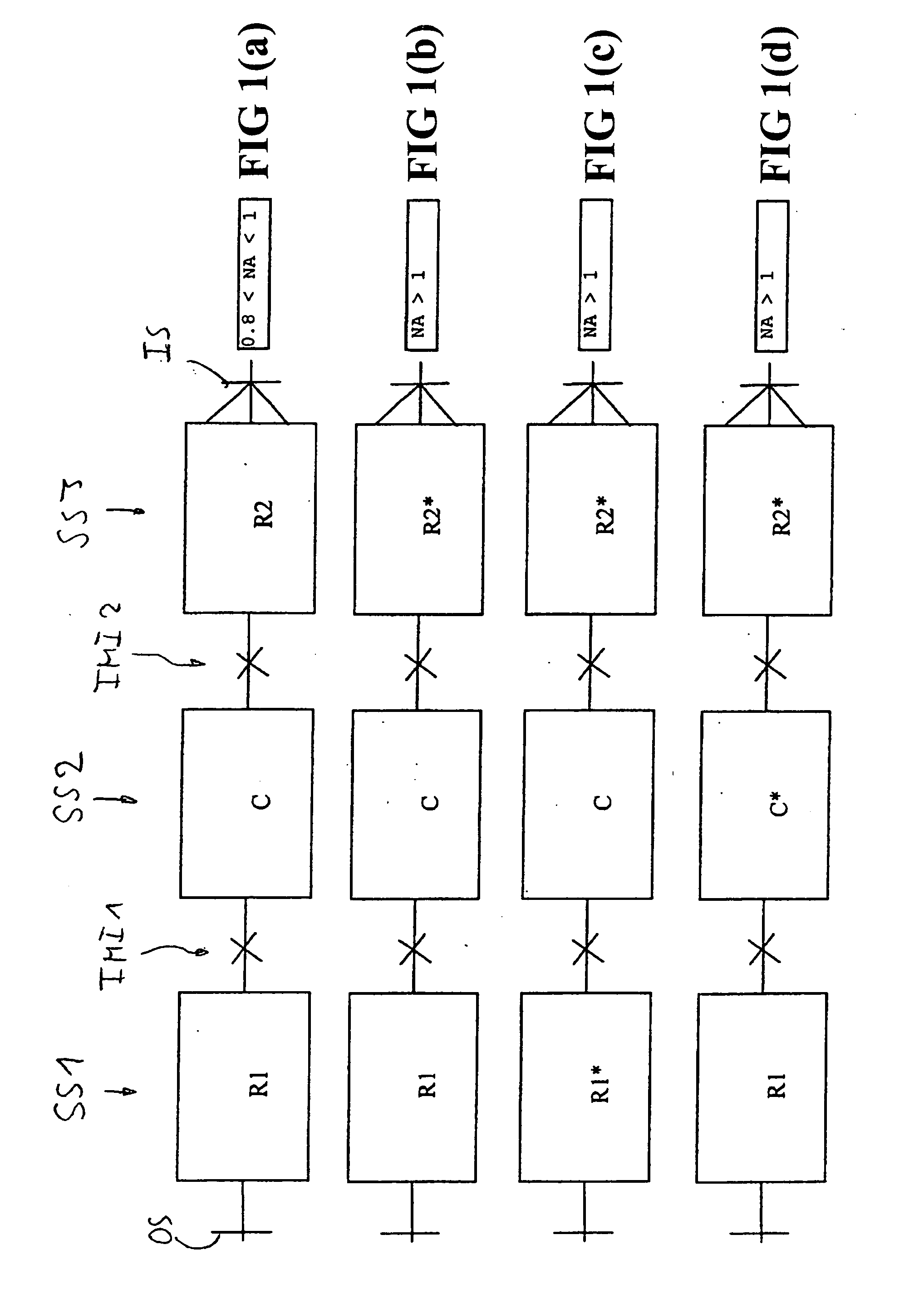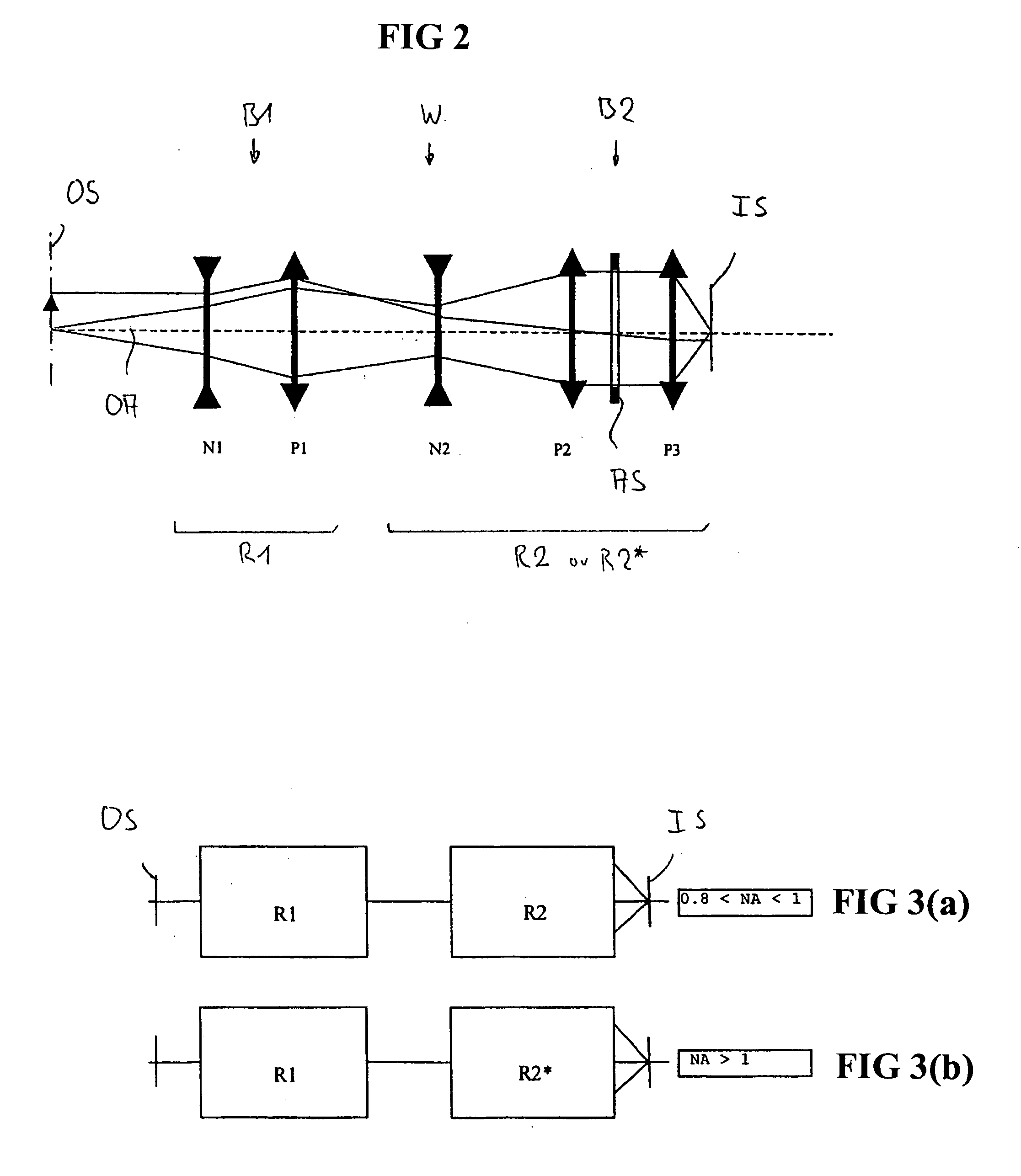Method of manufacturing projection objectives and set of projection objectives manufactured by that method
a technology of projection objectives and manufacturing methods, applied in the field of manufacturing projection objectives, can solve the problems of increasing the complexity of projection objectives, generating a new design of projection objectives, and still insufficient one or more results, and achieve high optical performance standards
- Summary
- Abstract
- Description
- Claims
- Application Information
AI Technical Summary
Benefits of technology
Problems solved by technology
Method used
Image
Examples
Embodiment Construction
[0042] Some principles of the invention will now be explained with respect to FIG. 1, which shows schematic representations of related projection objectives of a set of projection objectives, where the projection objective is designed as a catadioptric projection objective for microlithography. The optical system is designed to project an image of a pattern on a reticle arranged in the planar object surface OS onto the planar image surface IS oriented parallel to the object surface on a reduced scale (e.g. 4:1) while creating exactly two real intermediate images IMI1, IMI2. The projection objective consists of three consecutive imaging subsystems SS1, SS2 and SS3 concatenated at the intermediate images and arranged in the sequence R-C-R, where “R” represents a refractive (dioptric) subsystem, “C” represents a catadioptric (or catoptric) subsystem and “-” represents the connection between the image subsystems at the intermediate image.
[0043] The first subsystem SS1 is a refractive (...
PUM
 Login to View More
Login to View More Abstract
Description
Claims
Application Information
 Login to View More
Login to View More - R&D
- Intellectual Property
- Life Sciences
- Materials
- Tech Scout
- Unparalleled Data Quality
- Higher Quality Content
- 60% Fewer Hallucinations
Browse by: Latest US Patents, China's latest patents, Technical Efficacy Thesaurus, Application Domain, Technology Topic, Popular Technical Reports.
© 2025 PatSnap. All rights reserved.Legal|Privacy policy|Modern Slavery Act Transparency Statement|Sitemap|About US| Contact US: help@patsnap.com



